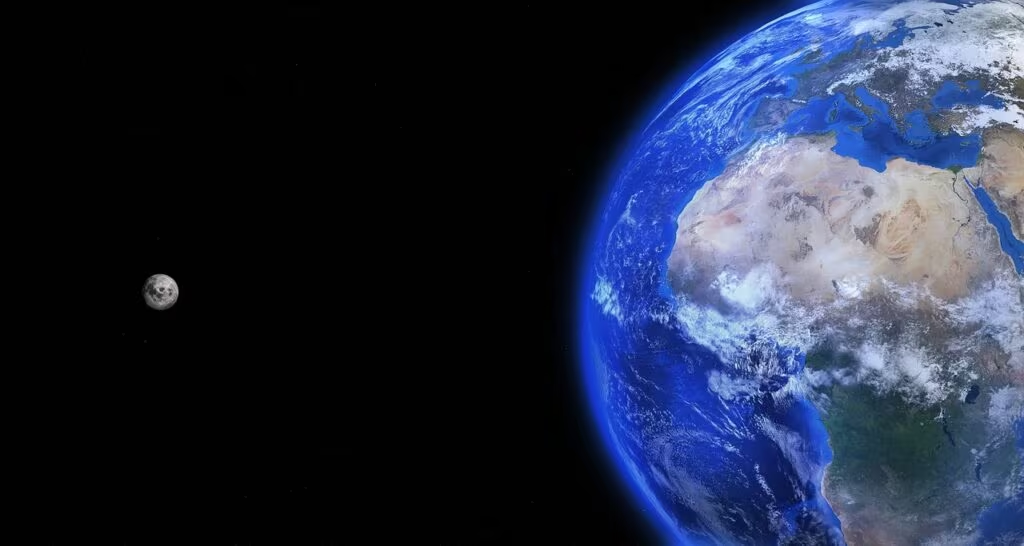Breaking the Dimensional Barrier: JWST Maps an Ultra-Hot Jupiter in 3D
In a landmark achievement for exoplanetary science, astronomers utilizing the James Webb Space Telescope (JWST) have successfully produced the first-ever three-dimensional map of a planet outside our solar system. The target, WASP-18b, is an extreme world known as an “ultra-hot Jupiter,” and the detailed map reveals unprecedented insights into its atmospheric dynamics, including temperatures so high they actively tear apart water molecules.
This breakthrough moves the field beyond traditional one-dimensional atmospheric profiles, providing a comprehensive view of how heat and composition vary across the entire face of an alien world. The findings confirm the immense power of JWST’s instruments to characterize exoplanet atmospheres in detail, paving the way for future studies of potentially habitable worlds.
The Ultra-Hot Jupiter Where Water is Torn Apart
WASP-18b is not merely hot; it is a world defined by thermal extremes. Orbiting its host star, WASP-18, in a dizzying path that takes less than one Earth day to complete, the planet is tidally locked, meaning one side perpetually faces the star (the day side) while the other remains in eternal darkness (the night side).
Key characteristics revealed by the JWST mapping include:
- Extreme Temperature: The planet’s day side reaches nearly 5,000 degrees Fahrenheit (approximately 2,700 degrees Celsius). This temperature is hotter than many small stars and is sufficient to vaporize rock and metal.
- Water Destruction: Despite the intense heat, the JWST detected water vapor in the atmosphere. However, the heat is so extreme that the water molecules are constantly being ripped apart into hydrogen and oxygen atoms on the day side, only to reform as they are carried to the slightly cooler night side.
- Atmospheric Dynamics: The 3D map shows a dramatic temperature gradient, revealing how powerful winds distribute heat around the planet. The hottest point on the planet is not directly under the star, indicating strong atmospheric circulation.

Mapping the Extreme Dynamics of WASP-18b
The ability to create a 3D map is vital because it allows scientists to track atmospheric flow and energy transfer, which are crucial for understanding planetary climate. The team found that the temperature difference between the day side and the night side of WASP-18b is significant, though not as extreme as models predicted, suggesting highly efficient winds are distributing the heat.
“This 3D map provides a level of detail we previously could only dream of,” said one of the lead researchers. “It shows us that the atmosphere of WASP-18b is incredibly dynamic, with powerful winds moving energy across the planet at speeds we are only beginning to quantify. The presence of water, even in this state of constant destruction and reformation, tells us a lot about the chemistry of ultra-hot worlds.”
The Technical Feat: How JWST Achieved 3D Mapping
The construction of the 3D map relied on JWST’s unparalleled sensitivity, particularly its ability to measure infrared light, which is essentially the heat radiating from the planet.
The Power of Secondary Eclipse Observations
To map the planet, astronomers used a technique called the secondary eclipse method. This involves observing the combined light of the star and the planet, and then watching as the planet passes directly behind its star.
- Baseline Measurement: The telescope first measures the total infrared light emitted by the star and the planet combined.
- Eclipse Measurement: As the planet disappears behind the star (the secondary eclipse), the light drops, allowing scientists to isolate the thermal emission coming only from the planet.
- Orbital Tracking: By continuously monitoring the planet’s thermal emissions throughout its entire orbit, especially as different parts of the day side and night side rotate into view, the team could track temperature and chemical variations across the surface.
This continuous monitoring, combined with JWST’s precise instruments like the Mid-Infrared Instrument (MIRI), allowed the researchers to create a grid of temperature and chemical composition points, which were then stitched together to form the 3D model.

Significance for Future Exoplanet Research
The successful 3D mapping of WASP-18b represents a crucial technological milestone that extends far beyond this single planet. It validates the methodologies needed to characterize atmospheres with high spatial resolution, which is essential for the search for biosignatures on smaller, potentially habitable worlds.
Moving Beyond 1D Profiles
Previously, atmospheric studies of exoplanets typically yielded a single, averaged temperature and composition profile for the entire visible atmosphere (a 1D model). This new 3D capability provides critical context:
- Understanding Climate: It allows scientists to model global weather patterns, wind speeds, and energy flow, similar to how meteorologists study Earth’s climate.
- Chemical Heterogeneity: It shows how different chemicals—like water vapor—are distributed and how they react to extreme thermal conditions across the planet.
- Refining Models: The data will force atmospheric modelers to refine their simulations, leading to more accurate predictions about the conditions on other exoplanets.
This technique, honed on an extreme world like WASP-18b, will now be applied to cooler, smaller exoplanets, including rocky worlds that may reside in the habitable zones of their stars. Understanding how atmospheres circulate heat is a fundamental requirement for determining if a planet can sustain liquid water on its surface.

Key Takeaways
This groundbreaking research using the James Webb Space Telescope fundamentally changes how astronomers view and study distant worlds:
- First 3D Map: JWST created the first three-dimensional map of an exoplanet, WASP-18b.
- Extreme Conditions: WASP-18b is an ultra-hot Jupiter with day-side temperatures reaching nearly 5,000°F (2,700°C).
- Water Cycle: Water vapor was detected, but the heat is so intense that molecules are constantly destroyed and reformed as they circulate between the day and night sides.
- Methodology: The map was constructed using the secondary eclipse method and continuous monitoring of thermal emissions throughout the planet’s sub-day orbit.
- Future Impact: This technique validates the path toward detailed atmospheric characterization of smaller, potentially habitable exoplanets.
Conclusion
The 3D mapping of WASP-18b is more than just a scientific curiosity; it is a demonstration of the unparalleled capabilities of the James Webb Space Telescope. By providing a holistic view of an exoplanet’s climate and chemistry, this work sets a new standard for atmospheric characterization. As astronomers continue to apply this sophisticated technique, the search for and understanding of truly Earth-like worlds will accelerate, bringing us closer to answering fundamental questions about our place in the cosmos.
Original author: Stefanie Waldek
Originally published: October 29, 2025
Editorial note: Our team reviewed and enhanced this coverage with AI-assisted tools and human editing to add helpful context while preserving verified facts and quotations from the original source.
We encourage you to consult the publisher above for the complete report and to reach out if you spot inaccuracies or compliance concerns.

